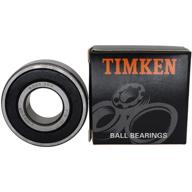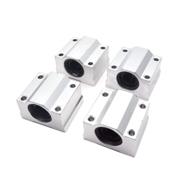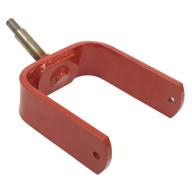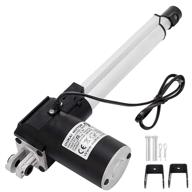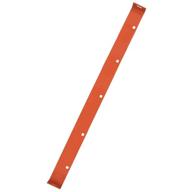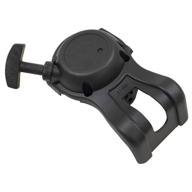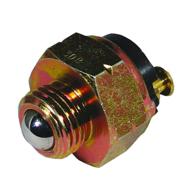How to replace a worn breather hose on a lawn tractor?
Replacing a worn out breather hose is an important maintenance task that helps keep your lawn tractor engine running smoothly. Here are the steps to replace the breather hose on a typical lawn tractor engine:
Materials Needed
- New breather hose (check manual for correct part number)
- Hose clamp pliers
- Flathead screwdriver
Instructions
- Locate the breather hose. It is usually a short, flexible rubber hose connected to the engine crankcase.
- Use the pliers to loosen the hose clamp and slide it back. You may need to spray some penetrating oil if it's stuck.
- Remove the old breather hose. Inspect the ends and make sure the hose barb fittings are in good shape.
- Install the new breather hose over the fittings and make sure it is fully seated.
- Slide the hose clamp over the end of the hose and tighten it with the screwdriver.
- Check for leaks by running the engine for a few minutes.
Tips
- Refer to your mower's manual for specific instructions.
- Replace the hose if it looks cracked, brittle, or swollen.
- Make sure the new hose can move freely without kinking.
- Route the hose away from hot or moving parts.
Replacing a worn breather hose is a quick and easy DIY fix that can prevent bigger problems down the road. With a few basic tools and a compatible replacement part, you can get your lawn tractor engine breathing freely again.
Another interesting products
How to find the right breather hose for your equipment?
Finding the correct replacement breather hose for your mower, tractor, or other engine-powered equipment ensures proper ventilation and operation. Here are some tips to get the right fit:
Similar products
Check the Manual
Your equipment's manual will specify the exact part number and dimensions needed for breather hose replacement. Write these details down before shopping for a new hose.
Top products in 🛑 Brakes & Clutches
Inspect the Old Hose
- Length - Measure the length of your current hose
- Diameter - Use calipers to measure the inner and outer diameter
- End fittings - Note the shape and size of the end fittings
Match to Your Engine
| If your engine is... | Look for a breather hose... |
|---|---|
| Single cylinder | 6"-12" long with small diameters |
| Multi-cylinder or large displacement | 12"-24" long with larger diameters |
Material Considerations
- Rubber hoses - Flexible and durable, withstands vibration
- Plastic hoses - More rigid but still flexible, resistant to oils
- Silicone hoses - Withstand high heat, but less durable
Purchase from Reputable Dealers
- Dealers specializing in your equipment brand
- Online retailers with good customer reviews
- Local auto parts stores or tractor supply shops
With the right measurements, materials, and fittings, you can locate an identical or similar replacement breather hose to maintain proper ventilation for your engine.
Consult your operator's manual, inspect your current hose, and match to your specific engine. Focus on quality replacements from reputable dealers. With this approach, you'll find the optimal breather hose for lasting performance.
How to Install a New Breather Hose on a Mower Engine
Replacing an old, cracked breather hose is important for engine ventilation. Follow these steps to properly install a new breather hose on your mower:
Materials Needed
- Replacement breather hose
- Hose clamp pliers
- Flathead screwdriver
- Clean rags
Instructions
- Locate the existing breather hose connection points on the engine crankcase and air filter housing.
- Loosen the hose clamps at both ends with pliers and slide them back.
- Remove the old breather hose and inspect the barbed fittings for damage or wear.
- Clean the barbed fittings with a rag to remove any oil or debris.
- Slide the new breather hose fully over both end fittings.
- Position the hose to avoid kinks and route it away from hot or moving parts.
- Slide the hose clamps over the ends and tighten with a screwdriver.
- Start the mower and check for air leaks.
Maintenance Tips
- Check breather hoses yearly for cracks or swelling.
- Ensure the hose moves freely without rubbing or catching.
- Route replacement hose the same path as the old one.
- Verify hose clamps are stainless steel to resist rust.
Installing a new breather hose properly maintains crucial ventilation in your mower engine. Taking time to correctly replace a worn breather hose using the steps above will keep your mower running smoothly for years to come.
Consult your owner's manual for specific breather hose locations and procedures. Proper installation ensures maximum engine performance and longevity.
How to Tell if Your Breather Hose Needs to be Replaced
A failing breather hose can lead to poor engine performance. Here are signs it may need replacement:
Inspect the Hose
- Cracks or dry rot - Replace if the hose is cracked or brittle
- Swollen areas - Bulges indicate the inner tube is failing
- Hardening or deformities - Hose should remain flexible
- Damaged ends - Look for cracking or loose fit on the barbs
Failing Connections
- Loose fittings - Check for air leaks at the hose connections
- Corrosion - Replace if the metal fittings show rust or corrosion
- Incorrect routing - Kinked or misrouted hoses strain the connections
Engine Performance Issues
- Rough idle - Insufficient ventilation causes uneven running
- Oil leaks - Crankcase pressure can push oil past seals
- Hard starting - Lack of ventilation hampers starting
- Reduced power - Poor airflow reduces engine efficiency
Maintenance Checks
- During oil changes - Inspect hoses when maintenance is due
- Seasonal tune-ups - Check all rubber components including breather hoses
- Equipment storage - Replace worn parts when storing equipment for the off-season
Catching a failing breather hose early prevents bigger problems. Inspect routinely for cracks, swelling, air leaks, and performance issues. Addressing a degraded breather hose quickly maintains proper ventilation for optimal engine operation.
Consult your owner's manual for breather hose locations and replacement procedures. Proper maintenance keeps your equipment running efficiently for years to come.







